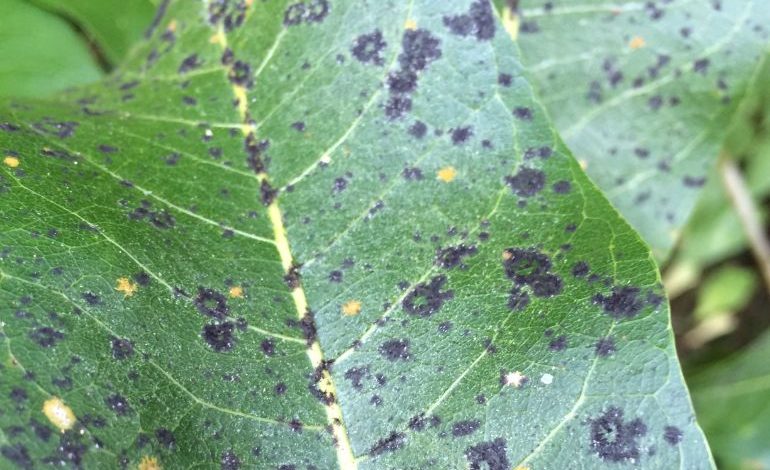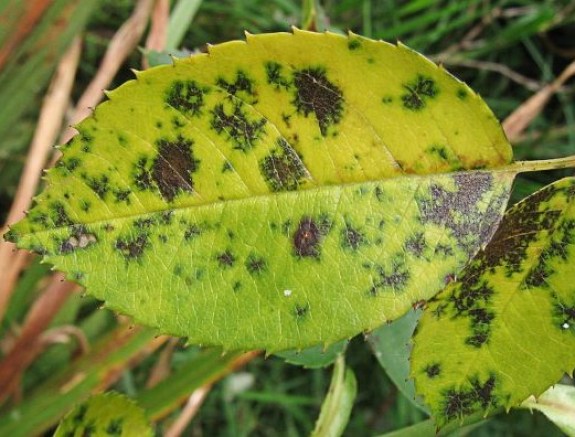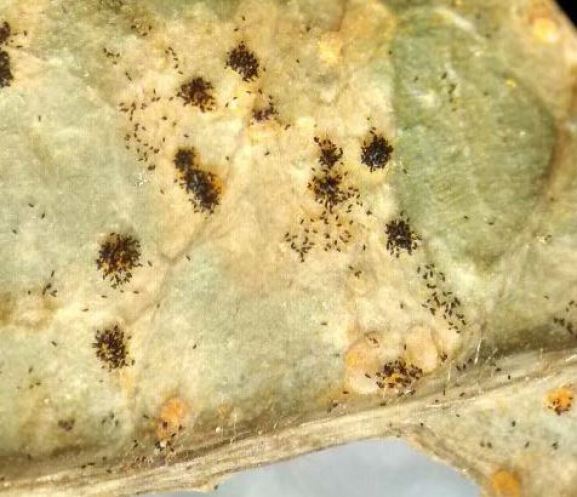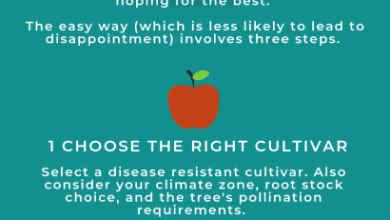Black spots on the leaves of plants. Why do they appear?

Hello to all agrohuerters! In today’s article we will see why there are black spots on the plants in our orchards or gardens and what are the main actions we can take to prevent their appearance.
Important! We should not confuse these black spots on the leaves with small insects or arachnids. It’s as simple as paying a little attention and seeing if the spots have legs or antennae.
The problem with black spots on plants is that they reduce the useful leaf surface for photosynthesis. That is, in the places where the black spots are found, the leaf cannot carry out photosynthesis. This can cause, if the spots are very large or they expand, that they end up doing very serious damage to our plants.

Black spots on the rosebush
Marssonina or black spot disease
Its Latin name is: Diplocarpon rosae.
It is a type of fungus that mainly affects rose bushes and sometimes begonias or geraniums. Rounded black spots appear on the leaves, which spread and can cause significant defoliation.
The best way to eliminate it is to remove the affected leaves and destroy them. It requires mild temperatures and the presence of water. It spreads by splashing rain, so we must pay special attention when watering and try not to get the leaves too wet.
Rust on leaves and stems
It is present throughout the country. It needs mild temperatures and very high humidity. It can appear after long periods of heavy rains. It is characterized by the appearance on the leaves of circular spots of at least 1 mm in diameter. Later, tan pustules can be seen, and in later stages, black pustules appear on stems and leaves. It can cause significant defoliation in plants.
In the photo you can see the typical black pustules of rust. I took this photo during my pathology practices in the university laboratory:

Black spots on tree leaves: maple black scab
This type of stain is caused by a fungus scientifically known as Rhytisma acerinum and mainly affects maples (Acer platanoides, Acer saccharinum or Acer pseudoplatanus). It is also known as «black maple scab» or «maple tar stain.» It is a common disease in Europe and North America.
The black spots usually appear in late summer or early fall. However, before reaching this stage they began as chlorotic spots and developed. Therefore, at first they are usually smaller, with lighter colors and they grow.

In addition to these cited examples you can find black spots on other plant species. The most important thing is that you detect them in time and know how to act.
Remedies against black spots on plants
We have been able to verify that most of the black spots on plants are caused by fungi. Furthermore, we know that once the fungus is on the plant it is difficult to eliminate. However, there are little tricks to prevent its appearance or prevent its expansion:
- To prevent its appearance, it is recommended to: maintain a healthy and fertile substrate (using fertilizers such as earthworm humus, compost or nettle slurry), rotate crops, favor aeration or use local varieties.
- If the fungus is already present on our plants, it is recommended to tear off the affected leaves and throw them in a rubbish bin that is not close to the orchard. Also, as many fungi expand with water, when watering we will try not to get the leaves too wet.
In addition to these tips, I leave you the link to another article where you can learn how to make your own natural fungicides, allowed in organic farming.
If you have problems with the spots of other colors on the plants, do not hesitate to consult the following articles: white spots on the leaves of the plants and brown spots on the plants.
References
- Bevan, R.J., Greenhalgh, G.N. (1976). Rhytisma acerinum as a biological indicator of pollution, Environmental Pollution (1970), 10(4), 271-285.
- Shuaibu M, Lee W, Schueller J, Gader P, Hong Y, Kim S (2018). Unsupervised hyperspectral band selection for apple Marssonina blotch detection, Computers and Electronics in Agriculture, 148, 45-53.
This is all for today, I hope you liked it and send us photos if you have black spots on the plants in your garden.
See you in the next article!


![Photo of [10 Vegetables] That You Can Sow in your Garden in Spring](https://www.complete-gardening.com/wp-content/uploads/2022/08/10-vegetables-that-you-can-sow-in-your-garden-in-spring-390x220.jpg)

